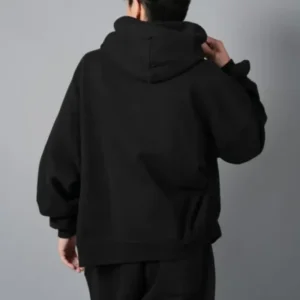As summer temperatures soar, keeping your home cool without running the air conditioner all day becomes a top priority. While many people rely heavily on cooling systems, the secret to a naturally cooler home lies in your window coverings. Choosing the right Blinds Dubai not only enhances your home’s décor but can also significantly reduce indoor heat. In this guide, we’ll explore how to use energy-efficient blinds and thermal curtains to beat the heat — effectively and affordably.
Why Curtains and Blinds Matter for Heat Control
Windows are one of the biggest culprits of heat gain inside a home. According to the U.S. Department of Energy, about 76% of sunlight that falls on standard double-pane windows enters to become heat. That means without proper window treatments, your home can quickly become an oven. The right curtains and blinds act as barriers, reflecting sunlight, trapping cool air inside, and reducing the need for fans or air conditioning.
1. Choose Thermal Curtains for Maximum Insulation
Thermal curtains are specifically designed to block heat and insulate your room. They are typically made from thick, multi-layered fabrics with insulating foam or backing.
Benefits of Thermal Curtains:
-
Block out sunlight and UV rays
-
Reduce indoor temperatures
-
Improve energy efficiency
-
Add a layer of noise reduction
For the best results, choose thermal curtains that are tightly woven and dark in color. They’re ideal for bedrooms, living rooms, or any area that faces direct sunlight during the day.
2. Use Reflective or Blackout Curtains
If thermal curtains aren’t your style, blackout curtains are another excellent option. These curtains are made from densely woven fabric that blocks almost 100% of outside light.
Reflective Curtains
Some blackout curtains come with a reflective white backing, which is especially useful in sunny climates. The reflective side faces the window, bouncing sunlight back outside and keeping rooms cooler.
These are perfect for:
-
South- or west-facing windows
-
Homes in hot climates
-
People who work night shifts and sleep during the day
3. Pick the Right Blinds to Block Heat
When it comes to energy-efficient blinds, not all styles are created equal. The type of material and design can greatly affect how much heat is blocked.
Cellular (Honeycomb) Blinds
Cellular blinds are one of the best window coverings for heat. Their honeycomb-shaped pockets trap air, creating a barrier between the window and your room.
Benefits:
-
Excellent insulation
-
Light filtering or blackout options
-
Sleek, modern look
These blinds are especially useful in homes with many windows or glass doors.
Wooden and Faux Wood Blinds
Wooden blinds add a natural touch to home décor while blocking out heat effectively. They’re thicker and better insulators than aluminum or vinyl blinds.
Faux wood blinds offer the same benefits but are more durable in humid spaces like kitchens and bathrooms.
4. Combine Curtains and Blinds for Better Cooling
For maximum cooling and insulation, consider layering curtains over blinds. This dual approach traps heat between the two layers, keeping the cool air inside and the heat out.
Example Combination:
-
Cellular blinds for insulation
-
Blackout or thermal curtains for added light control
This setup gives you more flexibility: open the curtains to let light in during cooler parts of the day, and close everything during peak sun hours.
5. Close Curtains and Blinds at the Right Time
It’s not just about what curtains or blinds you install — it’s also about how you use them. Timing is everything when it comes to blocking heat.
Best Practices:
-
Close east-facing window coverings in the morning
-
Close west-facing coverings in the afternoon
-
Keep everything closed during the hottest part of the day (11 am–4 pm)
-
Open windows and curtains at night to let in cool air
Automated or smart blinds are a great solution for scheduling these adjustments, especially if you’re not home during the day.
6. Use Light-Colored Fabrics to Reflect Heat
When selecting curtain fabric for cooling, lighter colors Blinds and curtains Dubai are better at reflecting sunlight. Whites, beiges, and pastels help bounce light away rather than absorbing it.
Ideal Light Fabrics:
-
Linen blends
-
Cotton
-
Sheer fabrics with UV protection
Pairing light-colored sheer curtains with a solid blackout curtain can give you the best of both worlds — style and temperature control.
7. Consider Outdoor Window Treatments
If you want to stop the heat before it even hits the glass, look outside your home. External window coverings like awnings, shutters, or outdoor blinds can reduce heat gain by up to 77%, according to energy efficiency studies.
Options Include:
-
Exterior solar shades
-
Window awnings
-
Rolling shutters
These are especially useful for windows that get direct afternoon sun and work best when combined with interior window treatments.
8. Add Curtain Liners for Extra Insulation
Even if you already own a beautiful set of curtains, you can upgrade them by adding thermal liners. These liners are inexpensive and easy to install.
Curtain Liners:
-
Attach with hooks or Velcro
-
Add thickness and insulation
-
Protect your main curtains from sun damage
This is a great solution if you don’t want to buy all new curtains but still want to cool your home with curtains effectively.
Conclusion: Small Changes, Big Difference
Keeping your home cool during the summer doesn’t always require high electricity bills. With the right combination of curtains and blinds, you can naturally regulate indoor temperatures while also improving your home’s aesthetics.
Whether you choose thermal curtains, energy-efficient blinds, or a smart combination of both, your windows can become powerful tools in your cooling strategy. Remember to match your choices to the room’s sun exposure, décor, and specific cooling needs.
Investing in the best window coverings for heat not only saves money but also enhances comfort and sustainability — making your home cooler, greener, and more enjoyable all year round.





